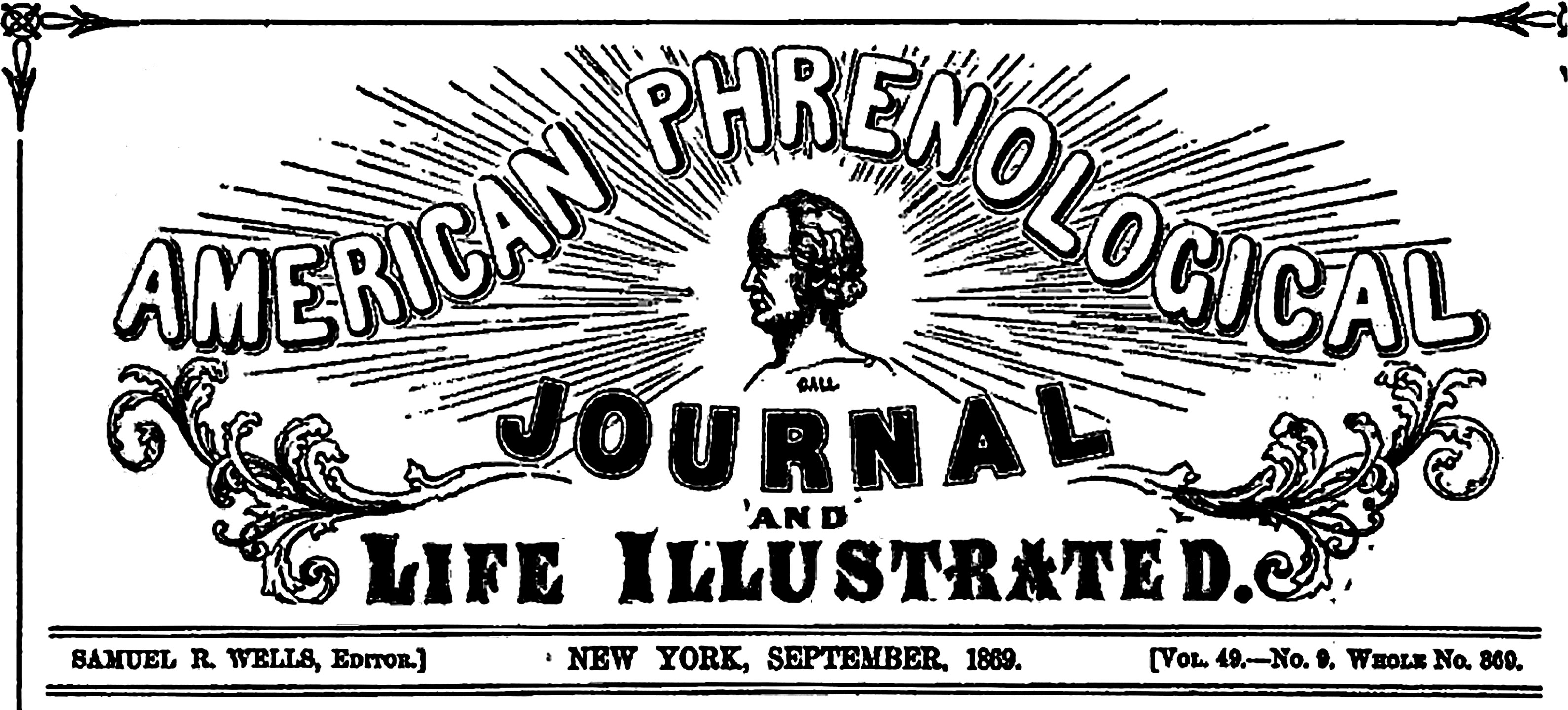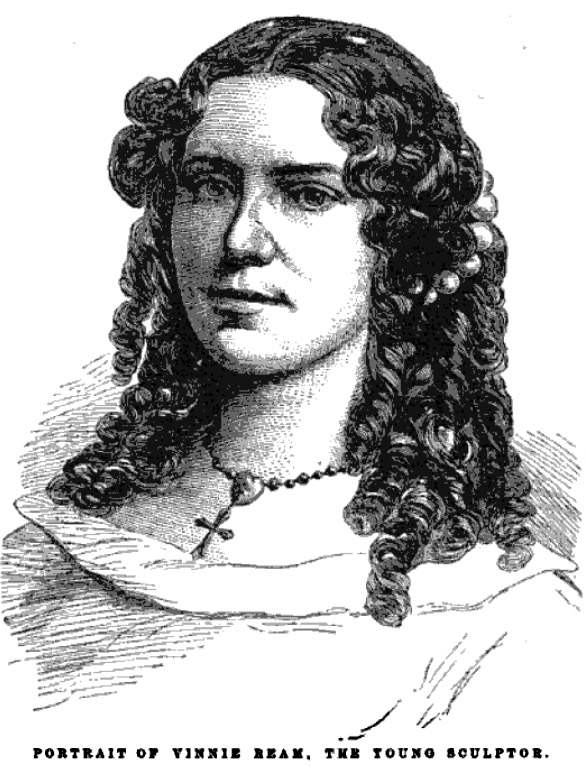
Vinnie Ream, Sculptor.

This is a very inartistic portrait of a young lady who would be an artist. The coarse wood-cut is far from doing justice to the original. During the late great impeachment trial in Washington the name Of Vinnie Ream became widely known, and much curiosity was manifested to know something of her history and personal appearance. We regret our inability, through lack of materials, to do the subject justice, but the best we have been able to procure are herewith given. Her features are somewhat thin, clearly defined and pointed, rather than round, blunt, and beefy, as indicated in Cut. She is something under the medium size, being about four feet six inches in height, and weighing about 115 pounds. Her complexion is of the brunette type, with dark, full eyes and black hair. Her body is lithe, but brain large, and her mind intensely active. She has large Ideality, Constructiveness, and Form, and large perceptive faculties in general. Imitation is also well developed; so are Firmness. She lacks nothing in the faculties which give ambition, energy, and executiveness. There is no reason to doubt but that she may succeed fairly in her chosen pursuit. Those who claim for her superhuman abilities, or who liken her to Michel Angelo, evince more enthusiasm than wise discrimination. We shall, however, look forward to a full measure of success for the young lady artist.
A gentleman connected With the New York daily press, Who spent some time in Washington during Mr. Lincoln's administration, furnishes
us the following sketch:
The portrait of Miss Ream is a good likeness, but lacks necessarily the remarkable flexibility and power of expression which are her striking peculiarities of face. The public have come to know and to take lively interest in Miss Ream, from the fact that was selected from among many by competitors by a committee of Congress to execute a life-size statue of the late President Abraham Lincoln to be placed in the Capitol at Washington as a National memorial of that great and good man. The decision of the committee was confirmed in the House of Representatives without a division. The fair sculptor has also been brought prominently the country, and widely divergent opinions have been expressed upon the merits or her work, through the medium of the press. She has many supporters in and out of Congress while others decry her work, and have sometimes forgotten criticism in personal abuse of the artist. Our own opinion is that Miss Ream possesses many essential qualities requisite to success in the work she has undertaken. She knew Mr. Lincoln intimately, and was engaged upon a bust of him at the time he was assassinated, and finished it soon after his death.
Thus she had the opportunity and the motive for inspiration; and we think has
availed herself or these advantages, for her model of the presents a perfect transcript of the form and sad features of the late President during his last days on earth, while over his angular and unpromising frame-work she has thrown a grace, ease, and chaste freedom of manner at once artistic, reverent and womanly. Having examined the different busts and statue executed, and in process of execution, of the lamented President, we are compelled to say that, taken as a whole, Miss Ream's statue gives a better idea of Mr. Lincoln than any other which we have seen. Miss Ream has taken her model to Europe, where it will be cut in marble. She is now in Paris, but will make her artist-home in Rome, and will do all her work there, devoting about two years to it. We sincerely hope and believe that she will return to her native land, bringing with her a beautiful and worthy statue of the late President, and thus practically settle the question of the wisdom her selection to perform the artistic part of a work so important – of a duty so noble, so patriotic, so national in its thought and purpose. Vinnie Ream is in her twenty-fourth year; was born in the Territory of Wisconsin, her father being treasurer of that Territory at the time of her birth.
After Wisconsin was admitted as a state into the Union, her parents removed to Washington, D.C. and soon after from thence to the State of Missouri, where Vinnie received the greater part of her education. At a later period, her parents removed over the border into Arkansas, residing at Little Rock and Fort Smith, where little Vinnie became well known and a favorite as a school girl. At the breaking out of the late war her father received and appointment in the Treasury Department, and Postmaster-General Blair appointed Miss Vinnie to a clerkship in his department, where she distinguished herself for extraordinary facility in penmanship, being able, it is said, to write five hundred names in a single hour. At the time, she was engaged, she chanced to pay a visit to the studio of Mr. Clarke Mills, and while witnessing the operation of modeling in clay she remarked “Why I can do that.” She took home some clay, and in two or three days returned to the studio with the model of her first work, The Dying Standard Bearer, with greatly surprised Mr. Mills for its effectiveness of design, as well as for being the production of one who had never attempted anything of the kind before. From this time she pursued her artistic studies and work at home, after Department hours, for about a year, when she gave up her situation and determined to devote herself to art. Wealthy friends offered every inducement to prevail on her to abandon this idea.
She at time received an advantageous offer of marriage; but her inevitable answer to every inducement was, “I am wedded to my art.” She had an enthusiastic devotion to the memory of her friend the Martyr President, and will give all the forces of her life, if need be, in doing her utmost to preserve and and hand down to future generations a trust-worthy and noble artistic transcript in marble of the form and features of the great Emancipator as he appeared on the last day or his life, saddened and care-worn consecrated by years of strife, tears, and blood, as the final sacrifice to the Moloch of rebellion and civil war. Her success, if made, will be another practical triumph for woman in a field where but few of either sex succeed in becoming eminent; and for this reason her career will be followed and watched over by her countrymen, and they, as we have every reason to suppose, will gladly award both recognition and support to an earnest and ever diligent spirit.
American Phrenological Journal, Vol. 49, No. 9, Whole No. 300, Sept. 1869, page 338-339. Digitized by Google.